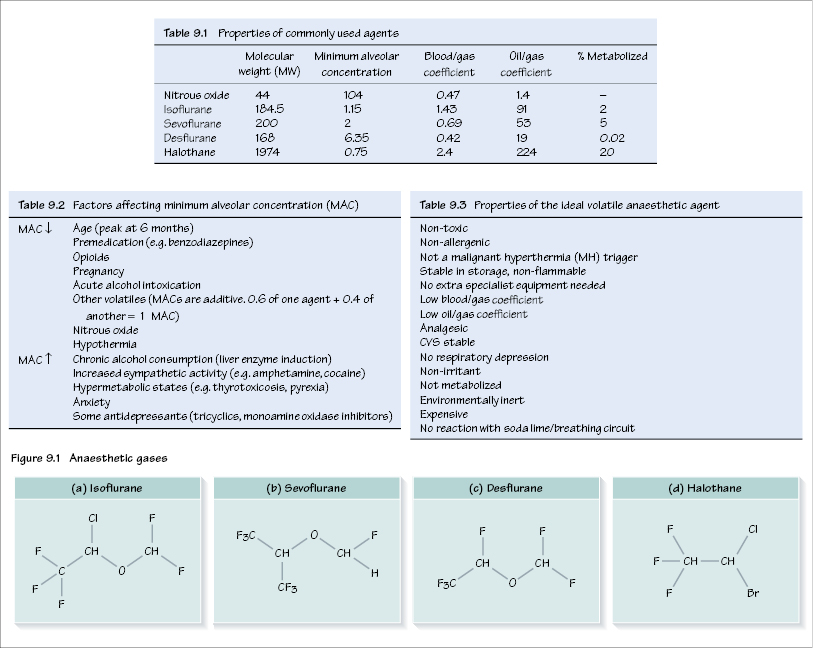9
General anaesthesia – inhalational anaesthetics

Volatile anaesthetics are liquids at room temperature. Part of the FGF passes through a vaporizer on the anaesthetic machine, becoming fully saturated with the vaporizer’s agent; it is then returned to the FGF. This gaseous form is inhaled by the patient, maintaining anaesthesia. In certain circumstances inhalational agents can be used to induce anaesthesia (e.g. children, difficult i.v. access, difficult intubation, upper airway obstruction).
The main volatile agents currently used are isoflurane, sevoflurane and desflurane. All are halogenated ethers, their properties depending on the specific halogenation. The mechanism of action is still not fully understood but key points include:
- action at pre- and/or postsynaptic ligand-gated channels – lipophilic sites;
- interruption of information processing and memory establishment;
- potentiation of inhibitory effect of γ-aminobutyric acid (GABA) at GABAA receptors;
- inhibition of transmission at excitatory N-methyl-d-aspartate (NMDA) receptors.
The potency of a volatile anaesthetic is related to its lipid solubility –the more lipophilic, the greater its potency. This is expressed as the oil/gas solubility coefficient.
The blood/gas solubility coefficient describes the rate of uptake of the agent and the speed with which adequate partial pressure of the agent is exerted within brain tissues to induce and/or maintain anaesthesia –the lower the coefficient, the quicker a steady state is reached; the greater the coefficient, the longer it takes for equilibrium of partial pressures between the alveoli and brain tissue to be met, and hence a slower speed of on- and offset (Table 9.1).
Minimum alveolar concentration (MAC)
Each agent has a specific minimum alveolar concentration (MAC), defined as the amount of vapour (%) needed to render 50% of spontaneously breathing patients unresponsive to a standard painful surgical stimulus. MAC is inversely proportional to potency. See Table 9.2 for factors affecting MAC.
General effects
Stay updated, free dental videos. Join our Telegram channel

VIDEdental - Online dental courses


